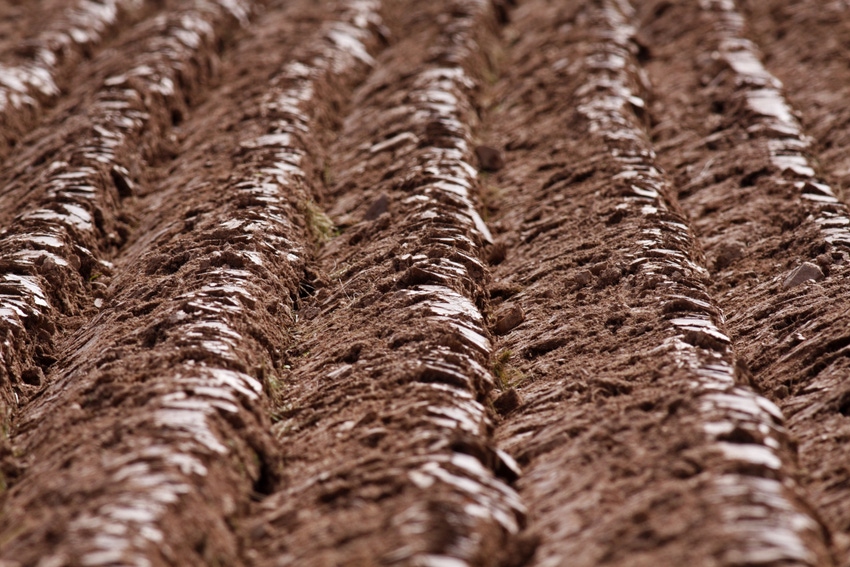Establishing measurements of soil health will go a long way in mobilizing further efforts to improve sustainability.
August 10, 2017

For scientists, farmers and agricultural policy-makers, one nagging question has yet to be completely “unearthed”: Just how healthy (or unhealthy) are the nation’s soils?
Dr. Wayne Honeycutt, chief executive officer of the Soil Health Institute, said, “We can’t really know the answer to that question until we have a set of common soil health measurements that scientists and farmers can compare and track over time, but we believe our endorsement of 19 measures will help us seek and track that common ground – and, ultimately, answer that important question.”
The concept of soil health is gaining widespread attention because it promotes agricultural practices that are not only good for the farmer but also good for the environment. An abundance of research shows that improving soil health boosts crop yield, enhances water quality, increases drought resilience, reduces greenhouse gas emissions, increases carbon sequestration, provides pollinator habitat and builds disease suppression. To help implement widely applicable, consistent measures of soil health, the Soil Health Institute announced its endorsement of 19 national soil health measurements.
Over the last three years, scientists from public and private sectors, farmers, field conservationists, soil test laboratories and many others provided input to develop a “Tier 1” list of recommended soil health measures, considered effective indicators of soil health. These specific measurements are regionally defined, have known thresholds and help define management strategies to improve soil function – like providing nutrients and water.
“Establishing these measurements of soil health will allow a broad group of stakeholders to speak the same language,” Honeycutt said. “This will go a long way in mobilizing further efforts to improve sustainability of our food production systems.”
National Association of Conservation Districts president Brent Van Dyke said the group "believes a shared, foundational understanding of how we measure soil health is critical to advancing the adoption of conservation management practices countrywide. We anticipate that through our own Soil Health Champions Network and supported by the measurement efforts of the Soil Health Institute, our nation's agricultural producers will be better equipped than ever to sustainably grow America's food, fuel and fiber in an era of unprecedented global demand."
Soil health, like human health, is a complex and holistic concept. For example, when a person goes to a medical doctor, their health is not judged by blood pressure alone. Instead, many tests are used to assess their health. In a similar way, soil health is based on numerous chemical, physical and biological measurements.
Examples of the specific Tier 1 measures include organic carbon, pH, water-stable aggregation, bulk density and available water holding capacity. A complete list of all 19 endorsed soil health measurements is available here.
“Many of these Tier 1 measures have proved effective to help producers achieve high yields for decades,” Honeycutt said. “Consequently, many of the soil test laboratories and field conservationists are already using these measurements. Currently, the Soil Health Institute is reaching out to those organizations to explore additional implementation opportunities.”
“We support the wide-scale adoption of these soil health indicators, recognizing the robust process and scientific collaboration behind them,” said Nick Goeser, director of the Soil Health Partnership and director of soil health and sustainability for the National Corn Growers Assn. “We encourage farmers and agronomists to regularly test soil, use these indicators as business management tools for greater insight and adopt practices that will improve soil health, like reducing the intensity of tillage to build soil organic matter.”
Soil Science Society of America president Dr. Andrew Sharpley said the society "supports development of scientifically rigorous methodologies to quantify soil health, foster research and promote outreach of reliable metrics to ranchers and farmers.”
Work continues with the agriculture industry to add more measurements to the Tier 1 classification; these currently are being researched as Tier 2 and Tier 3 measurements, but they require additional research to elevate them to Tier 1 usefulness. Such research may involve understanding regional differences in interpretation, establishing thresholds and developing management recommendations to improve soil functioning.
“In particular, several biological measurements have significant potential to help suppress diseases naturally, improve water quality, build drought resilience, increase carbon sequestration and reduce greenhouse gas emissions,” said Dr. Steven Shafer, chief scientific officer with the Soil Health Institute. “However, additional research is needed to evaluate Tier 2 and Tier 3 measurements and interpret their contributions to soil health in different climates, soils and production systems.”
“We are working with numerous partners to advance that research and are already making plans to get it into the hands of farmers and ranchers,” Honeycutt added.
You May Also Like

.png?width=300&auto=webp&quality=80&disable=upscale)

